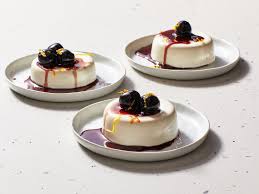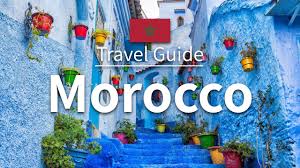Exploring the Art of Moroccan Cooking: A Recipe for Tagine
Moroccan cuisine is a vibrant tapestry of flavours, spices, and aromas that have captivated food enthusiasts around the world. One iconic dish that embodies the essence of Moroccan cooking is the tagine—a slow-cooked stew that tantalises the taste buds with its rich blend of ingredients.
Ingredients:
- 500g lamb or chicken, cut into pieces
- 2 onions, finely chopped
- 3 garlic cloves, minced
- 1 tsp ground ginger
- 1 tsp ground cumin
- 1 tsp ground coriander
- ½ tsp ground cinnamon
- Salt and pepper to taste
- Handful of dried apricots and prunes
- 2 tbsp olive oil
- Fresh coriander leaves for garnish
Instructions:
- In a tagine pot or a heavy-bottomed pan, heat olive oil over medium heat.
- Add the chopped onions and garlic, sauté until translucent.
- Add the lamb or chicken pieces to the pot and brown them on all sides.
- Sprinkle in the ground ginger, cumin, coriander, cinnamon, salt, and pepper. Stir well to coat the meat evenly with spices.
- Add enough water to cover the meat and bring to a simmer. Cover with a lid and let it cook on low heat for about an hour until the meat is tender.
- Add dried apricots and prunes to the pot during the last 15 minutes of cooking to add a sweet contrast to the savoury stew.
- Garnish with fresh coriander leaves before serving hot with couscous or crusty bread.
- 1. What are some popular recipes from Morocco?
- 2. How can I adjust a recipe to make it vegetarian or vegan?
- 3. Are there any easy and quick recipes for beginners?
- 4. What are common substitutes for ingredients in recipes?
- 5. How do I properly store leftovers from a recipe?
Bon appétit!
This hearty tagine recipe captures the essence of Moroccan culinary tradition—a harmonious blend of sweet and savoury flavours that transport you to the bustling markets of Marrakech. So gather your ingredients, unleash your inner chef, and embark on a culinary journey through Morocco’s delectable cuisine!
Top Five Recipe FAQs: Moroccan Cuisine, Vegan Adjustments, Beginner Tips, Ingredient Substitutes, and Leftover Storage
1. What are some popular recipes from Morocco?
Morocco boasts a rich culinary heritage that has given rise to a myriad of popular recipes beloved both locally and internationally. Some iconic dishes from Morocco include the fragrant and flavourful tagine, a slow-cooked stew typically made with tender meat, vegetables, and a blend of aromatic spices. Another favourite is couscous, a versatile dish made from steamed semolina grains served with a variety of savoury toppings such as vegetables, meats, or dried fruits. Harira, a hearty soup often enjoyed during Ramadan, combines lentils, chickpeas, tomatoes, and fragrant spices for a comforting bowl of goodness. These dishes not only showcase the diverse flavours of Moroccan cuisine but also reflect the warmth and hospitality deeply ingrained in the country’s culinary traditions.
2. How can I adjust a recipe to make it vegetarian or vegan?
When looking to adapt a recipe to suit a vegetarian or vegan diet, there are several simple substitutions you can make to transform a dish without compromising on flavour. Replace meat with plant-based alternatives such as tofu, tempeh, or legumes like chickpeas and lentils for protein-rich options. Swap dairy products for non-dairy alternatives such as coconut milk, almond milk, or cashew cream. Utilise vegetable broth instead of meat-based stocks for added depth of flavour. By making these adjustments and incorporating a variety of herbs and spices, you can easily create delicious vegetarian or vegan versions of your favourite recipes.
3. Are there any easy and quick recipes for beginners?
For beginners looking to dip their toes into the world of cooking, there are plenty of easy and quick recipes that serve as a perfect starting point. From simple pasta dishes and stir-fries to hearty soups and salads, beginner-friendly recipes abound in the culinary realm. These recipes often feature minimal ingredients, straightforward instructions, and short preparation times, making them ideal for those new to the kitchen. With a bit of practice and a willingness to experiment, beginners can gradually build their confidence and skills in the art of cooking while enjoying delicious homemade meals along the way.
4. What are common substitutes for ingredients in recipes?
In the world of cooking, it’s common to encounter situations where you may need to substitute ingredients in a recipe. Whether it’s due to dietary restrictions, pantry shortages, or simply personal preference, knowing common substitutes can be a culinary lifesaver. For example, if a recipe calls for buttermilk and you don’t have any on hand, you can easily create a substitute by mixing milk with vinegar or lemon juice. Similarly, if a recipe calls for eggs and you’re looking for a vegan alternative, mashed bananas or flaxseed mixed with water can work wonders. Being flexible and creative with ingredient substitutions opens up a world of possibilities in the kitchen, allowing you to adapt recipes to suit your needs and preferences without compromising on flavour or texture.
5. How do I properly store leftovers from a recipe?
Properly storing leftovers from a recipe is essential to maintain their freshness and flavour. Once your meal is cooked and you have leftovers, allow them to cool to room temperature before transferring them to airtight containers or resealable bags. Label the containers with the date to keep track of freshness. Refrigerate leftovers promptly, ideally within two hours of cooking, to prevent bacteria growth. When reheating, ensure that the food reaches a safe internal temperature to kill any potential bacteria. By following these storage guidelines, you can enjoy your delicious leftovers safely and savour their taste for another meal.



